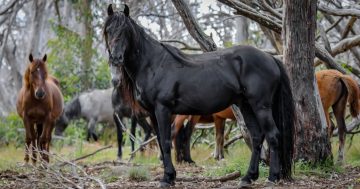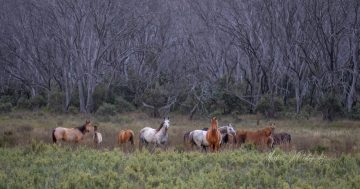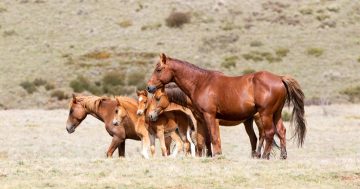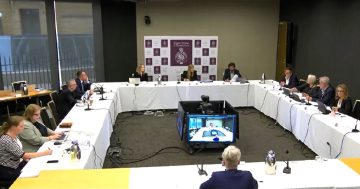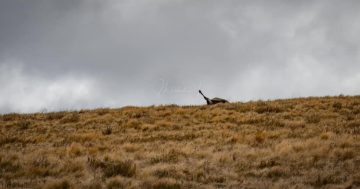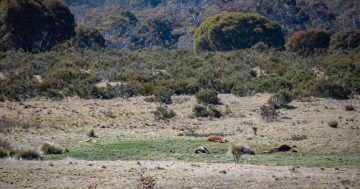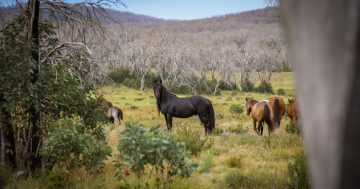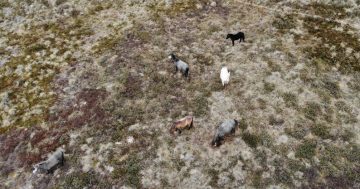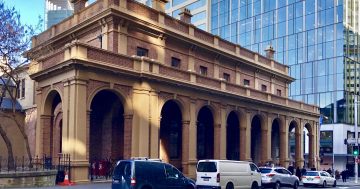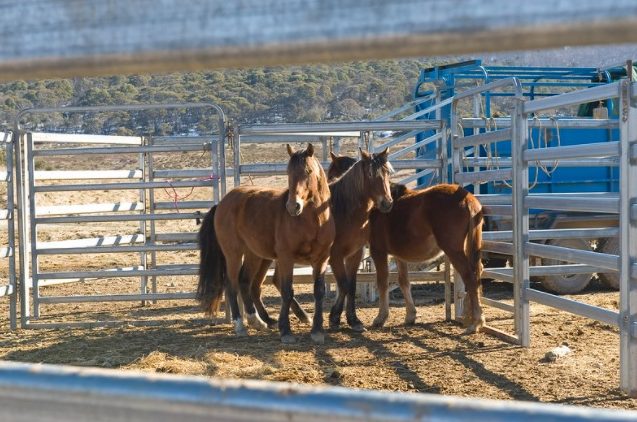
Trapping of wild horses continues in Kosciuszko National Park despite recent statistically and scientifically based reports of flawed population counts. Photo: Reclaim Kosci.
Brumby advocate Peter Cochran has told the NSW National Parks and Wildlife Service (NPWS) to lay down its weapons in the war against the wild horses, or brumbies, of Kosciuszko National Park (KNP).
Mr Cochran, speaking to Region, called for an immediate halt to the ground shooting and trapping of the wild horses in light of scientifically backed revelations the NPWS was working from a flawed population count methodology.
“We have statisticians to back that allegation,” he said.
“We’ve all known it’s never been the number they said. The numbers have been wildly exaggerated. I ride up there five days a week and I know nearly all the horses by name, as do the photographers who are up there every week, and the horses are just not there.
“Right now, while that is being disputed, the culling has to stop and the only way people can stop it is to call your local MP, call every state MP, call the Minister’s office, the Premier and Deputy Premier, it is the only way.”
His comments come in the wake of NSW Environment Minister Penny Sharpe’s call on August 7 for feedback on a proposed amendment to the Kosciuszko National Park Wild Horse Heritage Management Plan (KNP WHHMP), to allow aerial shooting as an additional option for wild horse control alongside the existing methods of trapping and rehoming, and ground shooting.
Ms Sharpe said widespread recognition of the urgent need to reduce numbers of wild horses to protect more than 30 native threatened species in the park had forced her to consider a more extreme option.
A November 2022 survey of the KNP showed an estimated wild horse population of 18,814.
This sparked outrage among environmental groups, which claimed the number of wild horses had surged, despite culling operations, by more than 4000 in the past two years.
They’ve accused the NSW Government of mismanaging the park.
NSW NPWS head Atticus Fleming said the survey had been carried out as part of the WHHMP, which would see the KNP population reduced to 3000 horses by 30 June, 2027.
Mr Fleming said the survey used the world’s best practice, and the report, authored by a leading scientist from the University of New England, Dr Stuart Cairns from the School of Environmental and Rural Science, had been peer-reviewed by scientists from the CSIRO and the Queensland Department of Agriculture and Fisheries.
“The scientific report indicates the best estimate is 18,814 horses and states there is 95 per cent confidence that the population is between 14,501 and 23,535 horses,” Mr Fleming said.
Mr Cochran said his estimates sat around 3000-4000 wild horses in KNP, “if that”.
A recent volunteer headcount, conducted in the park by brumby supporters over two days, cited 853 wild horses.
Independent bio-statistician Claire Galea was involved in the 2021 NSW kangaroo inquiry – established to inquire into and report on the health and wellbeing of kangaroos and other macropods in NSW – along with Penny Sharpe.
Ms Galea said at that time, both she and Ms Sharpe had expressed concerns about the counting methodology for kangaroos; the same used for brumby counts.
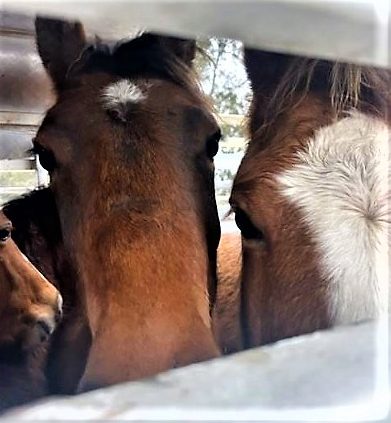
A load of 17 brumbies – mares, foals and stallions – from Kosciuszko National Park arrived at Indigo Brumbies Animal Rescue Service last weekend. Photo: Indigo Brumbies.
She cannot comprehend why the Minister challenged one count and supports the other.
“Stuart Cairns himself, in his reports for both kangaroo and wild horse counts, said they need to see a minimum of 60-80 clusters of animals to undertake any ‘reliable monitoring’,” she said.
Ms Galea suggests horse cluster numbers have been combined to meet the minimum quantity.
“In 2014, he only saw 20 clusters in the northern part of Kosciuszko National Park and in 2019 he only saw 43 clusters, well below, at both times, the necessary 60 to do any reliable statistical modelling,” she said.
“In the Snowy Valleys in 2014, they saw 10 clusters and in 2019, they saw five clusters.
“This modelling is unreliable. They did not see sufficient numbers to do these population estimates.”
Ms Galea said in the absence of any imagery of the horses, photos or video footage, there also was no way of knowing whether the animals had been double-counted.
She said implausible population increases were another red flag.
“If we look at North Kosciuszko for the wild horses and go with the population estimates they say, a mare would have to produce seven foals a year,” Ms Galea said.
The gestation period in horses is typically between 330 and 345 days, or 11 months. In free-roaming or feral horses, foals are naturally weaned around eight to nine months of age.
“We need evidence, we need an independent statistical investigation of these wild horses,” Ms Galea said.
”We need statisticians, videographers independent of the NSW Government, up there in a chopper to do that and extrapolate those figures using their numbers.”
Ms Galea said until that took place, a moratorium on the cull of brumbies was needed.
Equine scientist Joanne Canning, who has dedicated three years to researching the topic, agrees.
She says official figures highlighted a brumby population increase of 37 per cent, but soon discovered that failed to take into account the number of horses removed from the park each year.
“And it meant that the annual increase would have had to be 41 per cent, based on the official counts, and that’s a biological impossibility,” Ms Canning said.
“The scientific maximum is around 20 per cent per annum and that’s in ideal conditions.”
The community has until 11 September to provide input on the proposed amendment.
Former One Nation, now independent NSW MLC Rod Roberts has backed calls for a moratorium on culling, while yesterday in Canberra, public submissions were heard during the Federal Senate Inquiry into Impacts and Management of Feral Horses in the Australian Alps.
Original Article published by Edwina Mason on About Regional.







